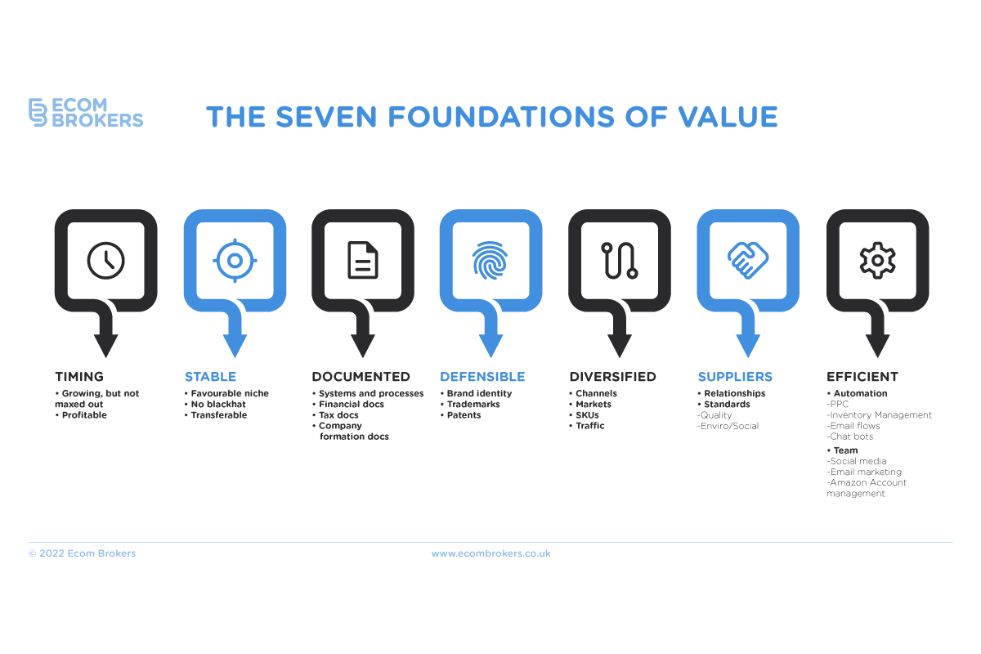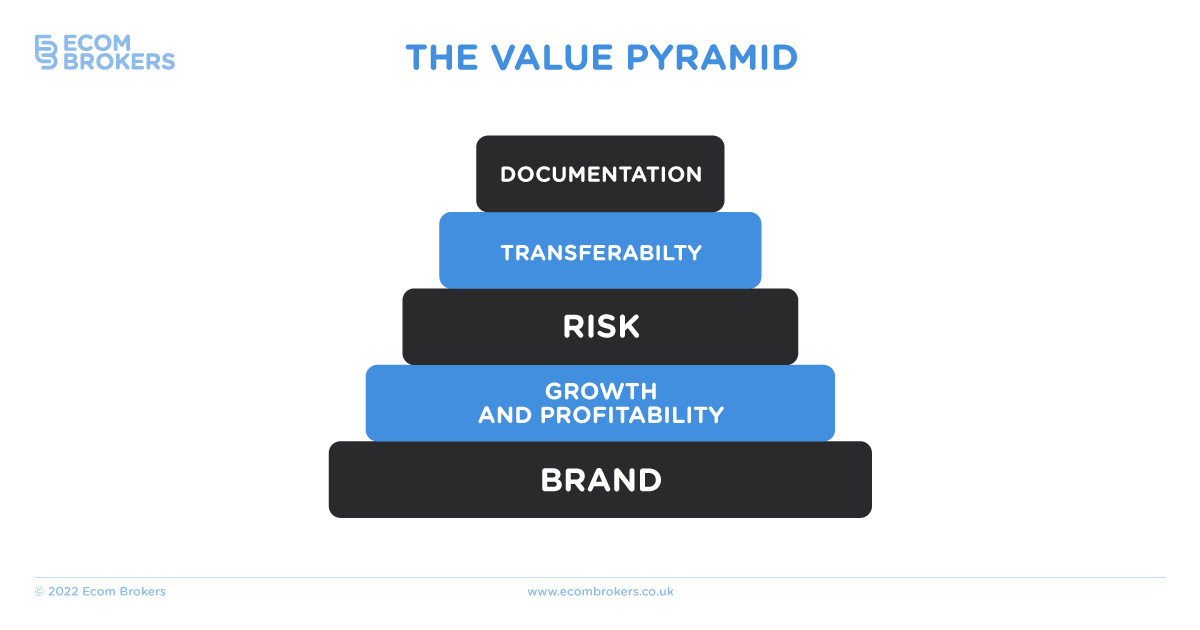
5 Ways To Automate And Scale Your Amazon Business So That It’s Sellable
Of course, launching and running an Amazon store is a fantastic challenge. At times, it’s fun, at other times it might be stressful. But it’s your baby either way.
However, while selling products is obviously awesome, the real end goal must be to automate and scale your business so that you make it more sellable.
In other words, everything you do must be part of a longer-term goal – that of adding value to your business so that, eventually, you can sell it for a good price.
The hard work starts now. By doing the right things, you’ll be able to sell your business for a price that suits you when the opportunity to sell suddenly comes along (and it will come along).
In this article, we’re going to walk you through 5 ways you can make your business automated, scalable – and so valuable that people want to give you a good price for it.
Make a Goal – And See It Through
Some people launch an Amazon business as a side hustle.
Some do it as a hobby.
Some do it just because they can.
That’s totally fine. But it’s highly unlikely that such merchants are doing the things that will fatten up the overall value of their business. They’re sourcing and selling products and having a great time.
And more power to them!
And if this is you? Totally cool. Kudos.
On the other hand, if your ultimate goal is to create a 7-figure business that pumps enough money into your bank account when it comes time to sell up, you will need to do the things now that help you achieve it.
You can start by getting specific about your goals. How much do you want to make month-on-month? What do you want your business to be worth by the end of the year?
These are types of questions that those who treat selling on Amazon as just a hobby don’t have to answer (and they won’t answer them). But if you want more than that – you need to start answering the big questions, setting smaller goals that tie into your bigger goals, and which bring you closer to where you want to be.
You can start implementing a quarterly review, too. At the end of each quarter, check to see where you are. Then, plan the next quarter – and the quarter after that. Properly map it all out. Create a vision and do what it takes to execute it, and realize it.
Expand Your Product Offering
One of the easiest mistakes you can make on Amazon is to get so comfortable sticking with the products you’re currently selling that you never venture out and try to sell something different.
What’s the value in expanding your product offering?
Firstly, selling more products makes your business more valuable to prospective buyers.
Secondly, selling more products means you’re running less risk that your business is less dependent on one or two top-selling products that could – at any time – disappear.
Thirdly, expanding your product offering means your business will appeal to a broader target audience. This means more potential customers, and more potential sales.
Fourthly, giving people more options increases customer loyalty. Instead of seeing what you’ve not got and heading elsewhere, customers can instead find everything they want in your store. After all, if there’s one thing customers want more than anything else, it’s convenience. If you give them a reason to stick with you, they will stick with you.
And if you can increase customer lifetime value, you can scale your store and make it more appealing to prospective buyers.
So take a look at your main categories, and see what sub-categories you can add.
Take a look at your competitor’s stores, and see what they’re selling that you’re not selling.
Check the “customers who bought this item also bought,” section on Amazon to generate some ideas.
As well as adding products to existing categories, you can also find new categories.
Build a Team
People talk a lot about automation. But what does it mean exactly?
An automated Amazon business is one that can run successfully without you having to be there all the time. You can disappear for a few days, and your business will continue to run in the background, making sales and turning profits.
There are two essential ingredients you need in order to automate your business:
- Build systems
- Build a team
Systems are essential processes that anyone should be able to learn. They make tasks more efficient, and allow your business to grow and scale.
For example, you can take an easy, repeatable task such as customer support, and document how to answer specific queries asked by your customers.
Then, a team member can come along, take a look at the document, and use it to field customer service questions.
Building a team is essential if you want to add more value to your business and make it sellable. No buyer is looking to take on a full-time job when they purchase your business. They want to be able to easily take over an Amazon store that’s able to tick along just nicely without them having to be hands-on.
So take a look at your various departments, including marketing, operations and finance.
Then, see what roles need to be filled.
Are you currently doing too many jobs?
Remove yourself from the firing line, stop writing all the emails, and hire someone to take over.
Then, introduce them to your systems so that your whole business runs smoothly and efficiently without you having to be there.
Organise Your Finances
Without a doubt, one of the things we all put off when it comes to running a business is our finances.
Numbers. Figures. Balance sheets. It’s all head-scratching stuff that we’d rather put to one side.
But if your finances are messy and not in order, they will prove to be a major stumbling block when it comes time to sell your business.
This is because one of the first things a prospective buyer will ask (if not the absolute first) is “can I review your financials?”
Your finances prove a few things. They demonstrate to the buyer how well your business is doing, and has been performing over the last few years.
But – crucially – they show how valuable your business is, as well as what you’ve based your sale price on.
If you can’t prove why you’ve reached the sales figure that you have, there’s no reason anyone in their right mind will make an offer.
Correct, clean and accurate financials require solid bookkeeping, correct verification, and all the right documents.
If you’re not sure where to start, and if you’ve never done this sort of thing before, it’s well worth calling in a bookkeeper and accountant to help you get on top of things. It will take some time, but this is far better than scrambling to get things together just as a buyer asks to see your figures.
And if you think you’re on top of your finances right now? You still might want to double-check to make sure.
Boost Your Businesses Valuation
The more you scale your business, the more valuable it is.
And the more valuable it is, the better the price you will get for it.
What we haven’t looked at so far are the two main ways you can bump up your business value, while at the same time making it more sellable to potential buyers.
- You can cut costs
- You can increase revenue
Slashing costs is – in theory at least – easy enough to do.
For instance, there might be a piece of software your company is paying for … but which you aren’t really using.
And let’s say it’s costing your business $2,000 a month. That might not sound a lot at first but check this out: Let’s say your business sale price is 30x multiple of your monthly profit.
By slashing $2,000 each month off of your expenses, you’re effectively increasing your business value by $60,000.
So take a look at your entire operations and see what else you can cut. What’s costing a fair amount of money each month or year that isn’t adding much value to your day-to-day operations?
When it comes to increasing your revenue, meanwhile, it’s helpful to take another look at your finances (see above) as this will give you a better picture of your most profitable areas.
For instance, there might be a specific marketing campaign that’s driving the most traffic and revenue. If so, you can invest more time and money into it.
Or, maybe it’s a particular product or upsell that’s generating a greater chunk of your revenue. Again, if so – double-down on it.
Conclusion
Automating and scaling your business so that it’s sellable isn’t easy, but it’s important that you start making some major moves now.
As well as the strategies mentioned above, it’s also key that you do all that you can to never run out of stock, as well as run daily checks on your finances.
Don’t underestimate the importance of a high-quality product listing, too. If there are ways you can improve this aspect of your Amazon business via video content, better images and keywords, you can increase the value and appeal of your store even more.
Ready to sell your business for the best possible price? Start by clicking the link below! No obligation, no hard sell. Just solid, professional advice.









